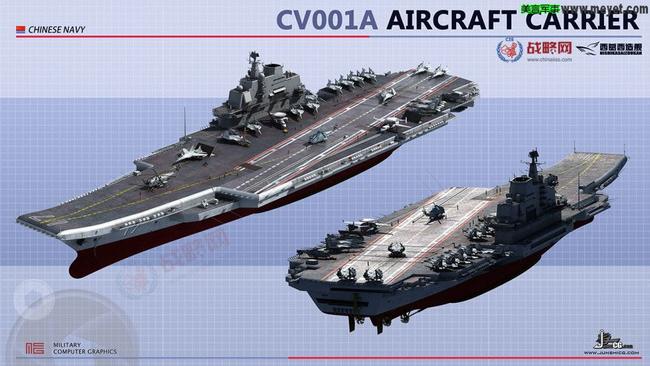New $17 billion aircraft carrier remains incapable of doing its job: US Government report
IT had just one job to do: the US Navy’s newest nuclear-powered aircraft carrier can’t carry aircraft. And the expensive flop comes as China gets closer to launching its own.

IT had just one $17 billion job to do: The United States Navy’s newest nuclear-powered aircraft carrier can’t carry aircraft. And the catastrophe comes as China gets closer to launching the first of its own.
The USS Gerald R. Ford (CVN-78) is supposed to be a technological marvel. It’s had revolutionary ideas applied to all aspects of its design — including the catapults can catching wires necessary for it to operate aircraft.
Problem is, two years overdue and billions of dollars over budget, they still don’t work.
Meanwhile, new satellite images have emerged of the advanced state of construction work on China’s first homegrown aircraft carrier.
Satellite image captured on 10/7 reveals that most of the flight deck has been installed on #001A aircraft carrier. pic.twitter.com/O5XGNsjLF8
— dafeng cao (@xinfengcao) July 22, 2016
This ship, based on the design of the Russian-built PLAN Liaoning currently in use as a trials and training ship, is much simpler in concept than its US counterpart.
While this limits its capabilities, it also means it is much more likely to be completed in a functional state.
As for the USS Ford, it was supposed to be handed over - two years late - to the US Navy in September. Now it won’t.
That leaves 100,000 tonnes of metal, heavily laced with advanced electronics, twiddling its thumbs with nothing to do.

REALITY GAP
CNN reports a June 28 memo from the US Defence Department’s director of operational testing and evaluation is damning in its latest assessment on progress on the ship upon which the US Navy’s future hinges.
It “continues to struggle launching and recovering aircraft, moving on-board munitions, conducting air traffic control, and with ship self-defence.”
EXPLORE MORE: Are aircraft carriers obsolete?
“These four systems affect major areas of flight operations,” director Michael Gilmore wrote in his report to the Pentagon and the ship’s builders.
“Unless these issues are resolved ... they will significantly limit CVN-78’s ability to conduct combat operations.”
Electromagnetic principles of EMALS on #CVN78 are similar to the exciting work happening with #Hyperloop. Fun stuff! pic.twitter.com/7FM7JSgg4a
— Osborne Transformer (@Osborne_Xfmr) May 18, 2016
The problem stems from fast-tracking new technology electromagnetic aircraft catapult and capture systems. They were incorporated in the ship without practical testing.
It all worked fine in the simulators.
However, reality is proving unexpectedly problematic.
Engineers have been working hard to boost the reliability of the systems for several years now.
Previous reports indicate the catapult ‘misfires’, an event that could regularly send a $120 million F-35 (and its pilot) into the sea.
While the ship can’t launch its aircraft reliably, it can’t safely land them either.
DELVE DEEPER: China’s carrier fleet to muscle-in on Asia
The new technology catch-wire system also frequently fails — meaning aircraft could crash into other aircraft, go over the side or, if lucky, bolt back into the skies again.
The navy says recent tests in May show these and other faulty systems should be ready ‘early next year’.
Seen this cool #timelapse yet? @aircraftcarrier #CVN78 turns 180 Degrees: https://t.co/egWLytDBWa @HIIndustries pic.twitter.com/D5pa9SkgsT
— SSI ShipConstructor (@SSI_CAD) June 21, 2016
If wrong, the fix may be a bitter — and incredibly expensive — pill to swallow.
Large sections of the ship will have to be ‘deconstructed’ to allow older technology catapults and arresting wires to be fitted.
“The Ford-class program is a case study in why our acquisition system must be reformed — unrealistic business cases, poor cost estimates, new systems rushed to production, concurrent design and construction, and problems testing systems to demonstrate promised capability,” chairman of the Senate Armed Services Committee Senator John McCain recently said.

How does China's first aircraft carrier stack up? Explore the Liaoning with @AndrewSErickson https://t.co/HjbxiwYHyy pic.twitter.com/0YAxharAcU
— ChinaPower (@ChinaPowerCSIS) July 30, 2016
ENTER THE DRAGON
Recent reports by state-owned media, along with new satellite photographs of Dalian shipyard, indicate China’s first homegrown aircraft carrier will likely soon be ready for launch.
Work is reportedly well underway in installing its simplistic version of a catapult — a ski ramp.
Once in the water, the ship — known only by its designation Type 001A — will probably need about a year of finishing work before it can undergo at-sea testing.
But all is not going well for the Chinese either.
#China's second aircraft carrier not far from entering the water: Military expert https://t.co/iwQ3UApemI pic.twitter.com/QSgpqudaZy
— People's Daily,China (@PDChina) June 29, 2016
Kings College naval historian and analyst Dr Alexander Clarke says there are indications Beijing has hit a few hurdles.
“It may not have had its final electronic systems fit start yet,” he says, “ which suggests they’ve had problems making it watertight. So they’ve probably had problems with the welding seams on the flight deck ... but that is speculation.
“Remember though, as with India (and the US), mistakes and problems actually help China. Learning from them improves the quality every time. The first carrier will be a guinea pig. The second carrier and the first LHD that is when it will really start to show what they’re capable of and the force structure they’re aiming for.”
Two new images of China's second aircraft carrier currently under construction at Dalian ... pic.twitter.com/PvzMfzKZQO
— @Rupprecht_A (@RupprechtDeino) July 15, 2016
China has begun work on its second home-grown aircraft carrier which may be a radically more advanced design.
This secret project is proceeding under cover in a Shanghai shipyard.
The People’s Liberation Army has previously declared its intention to launch six aircraft carriers — two of them nuclear powered — before 2025.




